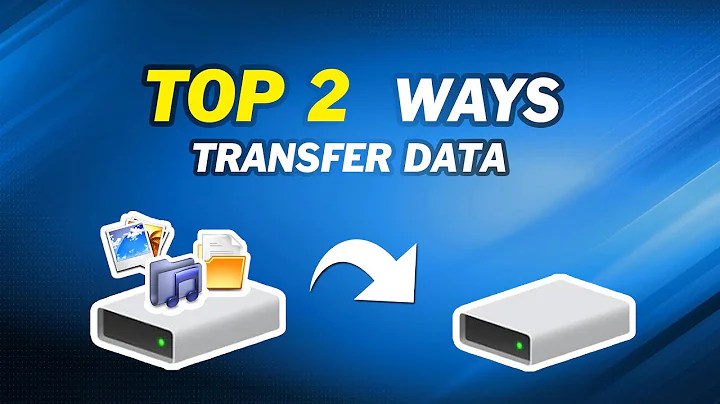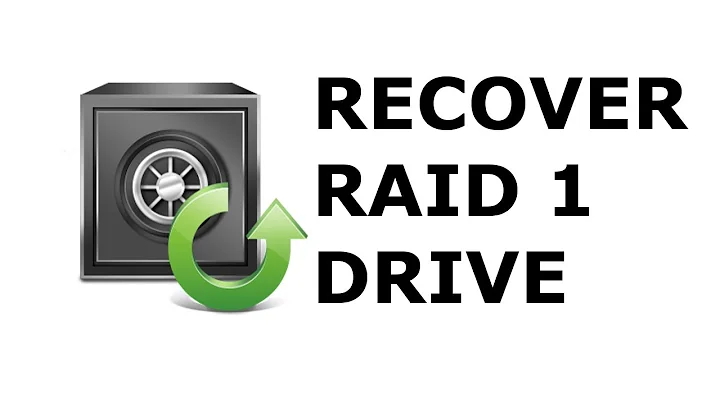How can I move RAID 1 hard drives from one enclosure to another or retrieve the data another way?
Solution 1
Guys ... just thought I would post my solution in case anyone else stumbles across this message. First of all, I did have a backup, but it was two weeks old and there where a few additional files I wanted to retrieve. And that enclosure on Amazon is non-functional (not sure why he has it listed for sale.) So, I pulled one of the hard drives from the non-functioning enclosure, hooked it up to my Windows XP machine with a USB to eSATA cable, and then used EASEUS Data Recovery Wizard to read the drive. It encountered both EXT and NTSF partitions, so I assumed that my data was located in the NTSF partition, which is was, so I was able to get back that last two weeks of files.
Thanks! Jim
Solution 2
RAID 1 is mirroring; there is no data stripping. Each drive is a copy of the other and each drive will function perfectly as a standalone 'normal' drive. Just hook it up to a computer and you'll be able to access the data. Your data is not lost. Without the enclosure, you are simply left with one drive and one exact duplicate backup. Not a bad situation.
Now for data access, you'd want to hook the drive up as read-only. Without the RAID controller, you have no way to keep the drives in sync if you were to write/modify any contents of the drive(s). Modification will happen if you don't specifically mount the drive as read-only. (Think of a file's last access time for example.)
As for migrating the two drives as-is into a device with a different RAID controller (or trying to use software RAID), I would have no faith in it working. Others could give you better advice perhaps. I've never migrated across RAID controllers so I'd be nervous and would never attempt it without an additional backup.
If you want to setup a new RAID array regardless of whatever new product you get, I'd do this...
- set aside one of the current drives as your backup
- get a third drive of same capacity
- install the second drive and the new/third/empty drive
- rebuild the array to populate the new drive
Solution 3
This question covers much of the same ground:
Is a RAID controller as easily replaced as a drive?
With regards to recovery, the painful truth response is 'You do have a backup, don't you?'
In practical terms, you may have to identify the innards and whether any other manufacturer used a similar design/identical RAID chipset and keep your fingers very crossed.
Edit: There's a used enclosure on Amazon:
http://www.amazon.com/G-Force-Megadisk-Network-Attached-MDN1000/dp/B000VEJGXC
Related videos on Youtube
Jim Zons
Updated on September 18, 2022Comments
-
Jim Zons almost 2 years
I have a Fantom G-Force Mega Disk MDN 1000 dual drive hard drive enclosure with two 500 MB hard drives setup in RAID 1 mirroring mode. Unfortunately, the enclosure/controller has failed, for the third time, and I am having a hard time finding a replacement enclosure for my drives. Can someone tell me if it is possible for me to place these two drives into another enclosure by another brand and still access the data ... or if I am going to need to locate another one of these enclosures from Fantom (now discontinued, I'm sure because of problems like this.) Otherwise, any advice on how I can retrieve the data from one of the striped drives would be appreciated.
Again, this is the second enclosure that has failed on me with this Fantom MDN 1000. The first time it happened, I bought a brand new enclosure and then just swapped the drives and I was back in business. The second time it happened, I bought another enclosure and again swapped out the drives. The third time it happened, I figured out it was the power supply so I swapped out the power supply on one of the other units and got it back again. This time, it appears to the the enclosure again, so without any new enclosures available, I'm stuck.
-
Seth Robertson about 13 yearsThis is why I use software raid. You have full control over what is going on, can directly validate the health of the individual drives (SMART—enclosures often do not support this or lie) and can perform verification and data scrubbing to validate that the drives are good copies of each other. You can also break apart and recreate the arrays to repartition or recreate the filesystems without booting to an install/rescue partition. Hosts are generally faster at computing checksums except for the very high end systems.
-
-
Linker3000 about 13 yearsWhether a single disk will work will depend on the structure used by the RAID controller to setup the disk. Most low-end NAS/RAID boxes use some form of Linux so the disks are likely to be Ext2/3 formatted and thus not natively supported on a Windows machine. It might be that there's no funny business going on with the disk structure so hooking up the disk to a (probably Linux-based) PC might work but I'd be cautious about making any assumptions.
-
 JCotton about 13 yearsgood point... accessibly of a drive depends on the filesystem used and the host OS you are connecting to. These Fantom devices don't do anything fancy though (certainly nothing like a NAS). They are listed as Windows/Mac compatible. I believe they present a single volume for the OS to format as it likes. I think in this case it is a simple mirror, nothing out of the ordinary.
JCotton about 13 yearsgood point... accessibly of a drive depends on the filesystem used and the host OS you are connecting to. These Fantom devices don't do anything fancy though (certainly nothing like a NAS). They are listed as Windows/Mac compatible. I believe they present a single volume for the OS to format as it likes. I think in this case it is a simple mirror, nothing out of the ordinary.




